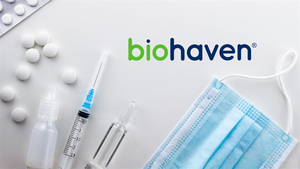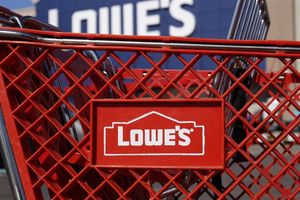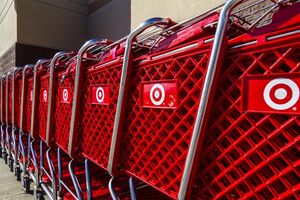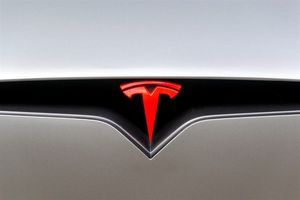
Swimming pool distributor Pool (NASDAQ: POOL) fell short of the market’s revenue expectations in Q1 CY2025, with sales falling 4.4% year on year to $1.07 billion. Its GAAP profit of $1.42 per share was 4.1% below analysts’ consensus estimates.
Is now the time to buy POOL? Find out in our full research report (it’s free).
Pool (POOL) Q1 CY2025 Highlights:
- Revenue: $1.07 billion vs analyst estimates of $1.1 billion (4.4% year-on-year decline, 2.5% miss)
- EPS (GAAP): $1.42 vs analyst expectations of $1.48 (4.1% miss)
- Adjusted EBITDA: $95.44 million vs analyst estimates of $100.8 million (8.9% margin, 5.3% miss)
- EPS (GAAP) guidance for the full year is $11.35 at the midpoint, roughly in line with what analysts were expecting
- Operating Margin: 7.2%, down from 9.7% in the same quarter last year
- Free Cash Flow Margin: 1.3%, down from 11.5% in the same quarter last year
- Organic Revenue fell 4.4% year on year (-7.1% in the same quarter last year)
- Market Capitalization: $11.35 billion
StockStory’s Take
Pool's first quarter results reflected continued headwinds from weather disruptions and a cautious consumer environment, as management noted that challenging conditions early in the quarter impacted demand, particularly in Texas and Florida. CEO Peter Arvan acknowledged that the delayed Easter holiday and softer macroeconomic backdrop weighed on new pool construction and renovation activities, but highlighted resilient performance in maintenance product sales and ongoing improvements in March sales trends. Management pointed to progress in private label chemical products and expanded digital capabilities as positives amid the tougher landscape.
Looking ahead, Pool reaffirmed its full-year profit guidance, attributing its outlook to the ability to pass through vendor price increases and ongoing expense discipline. CFO Melanie Hart explained that recently announced tariffs would have a minimal direct impact, as most products are sourced domestically, but acknowledged that competitive pricing and persistent macro uncertainty could continue to pressure discretionary spending and margins. Management expressed confidence that investments in technology, supply chain, and network expansion would help the company outperform the broader market as industry conditions normalize.
Key Insights from Management’s Remarks
Management emphasized that first quarter performance was shaped by a combination of weather-related challenges and ongoing macroeconomic uncertainty, leading to weaker demand in discretionary categories but steady maintenance demand. The company cited several key factors influencing results:
- Weather Impacted Sales: Unfavorable weather conditions at the start of the quarter, especially in Texas and Florida, delayed pool openings and reduced new pool construction activity. Improvement was seen in March, but not enough to offset early declines.
- Maintenance Product Stability: Maintenance and repair product sales remained durable, with CEO Peter Arvan stating these categories are less sensitive to economic downturns. Private label chemicals, in particular, saw double-digit growth, benefiting from Pool's Pool 360 technology platform.
- Discretionary Spending Weakness: High interest rates and macro uncertainty continued to suppress demand for new pool builds and large remodels, with dealers reporting longer decision cycles and more phased renovation projects. Permit data in key states was generally below last year’s levels.
- Price Increases and Tariffs: Vendors implemented in-season price increases to offset new tariffs, which Pool passed on to customers. Management expects these increases to have a limited overall impact due to the company’s largely domestic sourcing, though equipment costs could rise moderately.
- Competitive Pricing Environment: More aggressive pricing tactics by competitors were noted, particularly where demand was softer. Management responded selectively to defend market share, but acknowledged some incremental margin pressure from this dynamic.
Drivers of Future Performance
Management’s outlook for the remainder of the year centers on steady maintenance demand, the company’s ability to pass through price increases, and disciplined cost management, while recognizing continued risk from macroeconomic headwinds and competitive pressures.
- Maintenance Demand as Foundation: The installed base of pools continues to grow, supporting consistent demand for maintenance and repair products, which make up the majority of Pool's revenue and are less subject to economic swings.
- Margin Management Amid Price Increases: Vendor price hikes tied to tariffs are expected to be passed through to customers, but management noted potential for further margin pressure if competitive pricing intensifies or if higher input costs are not fully recouped.
- Discretionary Spending Sensitivity: Persistent macro uncertainty and high interest rates could continue to limit recovery in new pool construction and major remodels, with management monitoring permit trends and consumer confidence as indicators for discretionary demand.
Top Analyst Questions
- Ryan Merkel (William Blair): Asked about expectations for second quarter top-line growth and the timing of price increases; management indicated low single-digit growth is likely, with most tariff-driven price effects occurring in the second half.
- Quinn Fredericksen (Baird): Inquired about trends in average selling price (ASP) for new pools and whether consumers are trading down; management said higher-end projects are holding steady, with little evidence of trade-down, but more phased remodels are occurring.
- Susan McClary (Goldman Sachs): Questioned the risk of demand destruction from price increases and the company’s ability to maintain market share; CEO Arvan expressed confidence in Pool’s value proposition and the non-discretionary nature of maintenance categories.
- Scott Schneeberger (Oppenheimer): Sought clarification on the impact and timing of tariff-related price increases; CFO Hart confirmed both April and June vendor price hikes are included in current guidance, with further increases possible if additional suppliers follow.
- Colin Varon (Deutsche Bank): Asked about underperformance in Texas and growth opportunities for private label chemicals; management attributed Texas softness to weather and macro factors, and highlighted significant margin and share potential in private label products.
Catalysts in Upcoming Quarters
In the coming quarters, the StockStory team will focus on (1) signs of stabilization or improvement in discretionary pool construction and remodel activity, (2) Pool’s execution in passing through vendor price increases without losing market share or margin, and (3) continued growth in private label chemical sales and Pool 360 digital adoption. The ability to manage competitive pricing and navigate macroeconomic shifts will also be critical markers for the company's trajectory.
Pool currently trades at a forward P/E ratio of 26.4×. At this valuation, is it a buy or sell post earnings? The answer lies in our free research report.
The Best Stocks for High-Quality Investors
The market surged in 2024 and reached record highs after Donald Trump’s presidential victory in November, but questions about new economic policies are adding much uncertainty for 2025.
While the crowd speculates what might happen next, we’re homing in on the companies that can succeed regardless of the political or macroeconomic environment. Put yourself in the driver’s seat and build a durable portfolio by checking out our Top 5 Growth Stocks for this month. This is a curated list of our High Quality stocks that have generated a market-beating return of 176% over the last five years.
Stocks that made our list in 2020 include now familiar names such as Nvidia (+1,545% between March 2020 and March 2025) as well as under-the-radar businesses like the once-micro-cap company Tecnoglass (+1,754% five-year return). Find your next big winner with StockStory today.






